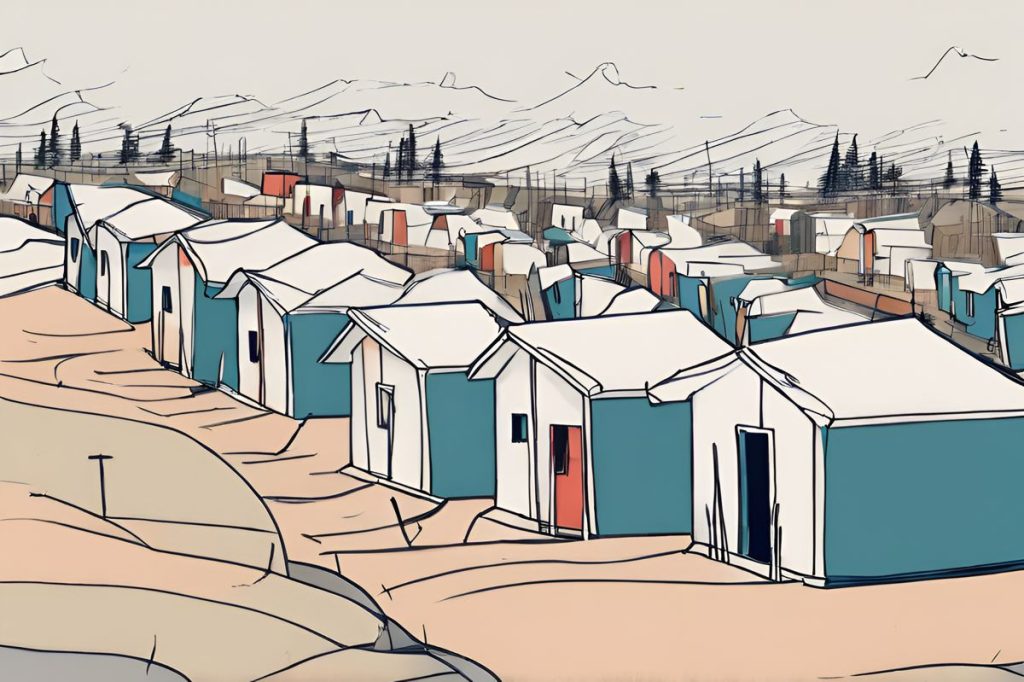The Ktizo plan to upgrade refugee homes is facing delays due to bureaucratic inertia, financial strains on displaced residents, and squatters taking over abandoned buildings. Calls for quick action have been made to expedite the demolition and reconstruction process to alleviate the burden on those awaiting improved housing conditions.
Why is the Ktizo plan for upgrading refugee homes facing delays?
The Ktizo plan for upgrading refugee homes is facing delays due to a lack of tangible progress in demolition, financial strains on displaced residents, and bureaucratic inertia. Displaced individuals are experiencing financial burden due to insufficient rental subsidies and squatting has become an issue in the abandoned buildings earmarked for tear-down. Calls for action have been made to expedite the process.
Stagnation in Ktizo Plan Execution
Residents displaced from decrepit refugee housing blocks, earmarked for demolition under the government’s regeneration initiative, are facing a quagmire of stalled progress. Not only has the promised redevelopment lagged significantly, but reports have surfaced indicating squatters have taken over the abandoned sites. As buildings earmarked for tear-down stand defiant against time, they have been repurposed into makeshift residences, with cloths draped over absent doorways and windows – a makeshift solution to the government’s inertia.
Complaints have streamed in from former occupants who, nearly a year prior, vacated their apartments on the assurance of imminent demolition due to safety risks. The reality, however, has been a stark contrast to the commitment given, as many buildings not only remain intact but have also become havens for squatters. This situation has sparked discontent among those who were relocated, as the delay disrupts lives and raises questions about the necessity of their displacement.
The Financial Strain on Displaced Residents
The strain on those uprooted extends beyond mere inconvenience. As part of the Ktizo scheme, displaced residents are entitled to a rental subsidy for a period of up to 24 months. This financial aid, though it varies by apartment size, is often insufficient in the face of soaring rental prices, particularly in high-cost areas like Limassol. This leaves many to grapple with the difference, as they pay out of pocket to cover the full rental costs of their temporary homes.
Former residents express a mix of frustration and regret. Some suggest that had they been allowed to remain until actual demolition work commenced, they could have saved themselves, and the state, the additional financial burden. With no tangible progress, and the ticking clock on their rental subsidies, the anxiety among the displaced is palpable. They look towards a future with no clear resolution in sight, and an ever-growing concern over what will occur once their subsidies lapse.
Demolition Delays and Calls for Action
The snail-paced progress has not gone unnoticed by officials. Earlier in the month, the House refugee committee implored the authorities to expedite the process after witnessing the extent of the project’s delay. Despite the urgency conveyed by the committee, only a handful of tenders have been released related to the demolition of buildings across several refugee estates. This sluggish movement stands in contrast to the pressing need to complete the demolition of the 20 apartment buildings slated in the first phase of the plan.
While the government gears up for the next set of demolitions, refugees are caught in a limbo of uncertainty. The dismantled structures, stripped of valuable materials, stand as hollow reminders of both the past and the unfulfilled promises of a safer, rejuvenated future. The community’s hope now hangs on the government’s next move, as the clock ticks on both the physical and metaphorical structures of their lives.
Why is the Ktizo plan for upgrading refugee homes facing delays?
The Ktizo plan for upgrading refugee homes is facing delays due to a lack of tangible progress in demolition, financial strains on displaced residents, and bureaucratic inertia. Displaced individuals are experiencing financial burden due to insufficient rental subsidies and squatting has become an issue in the abandoned buildings earmarked for tear-down. Calls for action have been made to expedite the process.
What is causing the stagnation in the execution of the Ktizo plan?
Residents displaced from decrepit refugee housing blocks, earmarked for demolition under the government’s regeneration initiative, are facing a quagmire of stalled progress. The promised redevelopment has lagged significantly, and squatters have taken over the abandoned sites. Former occupants have complained about the delay impacting their lives and raising questions about the necessity of their displacement.
How is the financial strain affecting displaced residents in the Ktizo plan?
Displaced residents are entitled to a rental subsidy as part of the Ktizo scheme, but this aid is often insufficient to cover the full rental costs. With soaring rental prices, many individuals are left paying out of pocket for their temporary homes. The delay in the plan’s execution adds to the financial burden and uncertainty for those awaiting improved housing conditions.
What calls for action have been made regarding the demolition delays in the Ktizo plan?
The House refugee committee has urged authorities to expedite the process after witnessing the significant delay in the project. Despite the urgency conveyed by the committee, only a few tenders have been released for the demolition of buildings. The slow progress contrasts with the pressing need to complete the demolition of numerous apartment buildings slated in the first phase of the plan.

